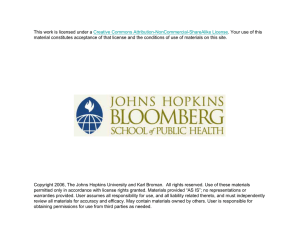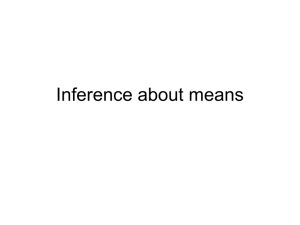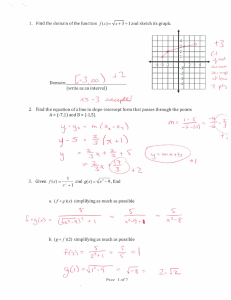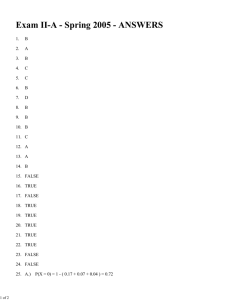Answers to the selected practice problems for Midterm 2.
advertisement
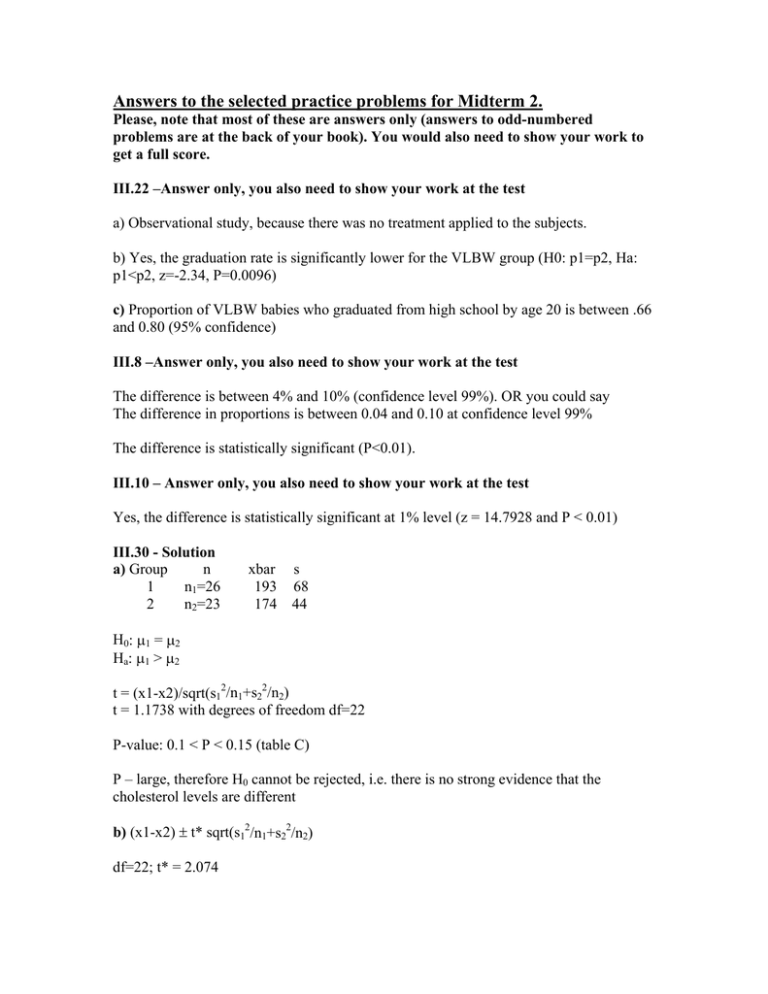
Answers to the selected practice problems for Midterm 2. Please, note that most of these are answers only (answers to odd-numbered problems are at the back of your book). You would also need to show your work to get a full score. III.22 –Answer only, you also need to show your work at the test a) Observational study, because there was no treatment applied to the subjects. b) Yes, the graduation rate is significantly lower for the VLBW group (H0: p1=p2, Ha: p1<p2, z=-2.34, P=0.0096) c) Proportion of VLBW babies who graduated from high school by age 20 is between .66 and 0.80 (95% confidence) III.8 –Answer only, you also need to show your work at the test The difference is between 4% and 10% (confidence level 99%). OR you could say The difference in proportions is between 0.04 and 0.10 at confidence level 99% The difference is statistically significant (P<0.01). III.10 – Answer only, you also need to show your work at the test Yes, the difference is statistically significant at 1% level (z = 14.7928 and P < 0.01) III.30 - Solution a) Group n 1 n1=26 2 n2=23 xbar s 193 68 174 44 H0: µ1 = µ2 Ha: µ1 > µ2 t = (x1-x2)/sqrt(s12/n1+s22/n2) t = 1.1738 with degrees of freedom df=22 P-value: 0.1 < P < 0.15 (table C) P – large, therefore H0 cannot be rejected, i.e. there is no strong evidence that the cholesterol levels are different b) (x1-x2) ± t* sqrt(s12/n1+s22/n2) df=22; t* = 2.074 The difference in mean cholesterol levels µ1 - µ2 is between -14.5719 and 52.5719 with 95% confidence c) x1 ± t* σ/sqrt(n) df=25; t*=2.06 The data shows with 95% confidence that the mean cholesterol level in pet dogs is between 166 and 220 d) Both samples must be simple random samples from respective populations; the population distributions should not be strongly skewed and should not have outliers (or the sample sizes should be equal), because the sample sizes are moderate. The chief threat is that the data are not an SRS, for example because all clinic dogs came from only one clinic, or because the owners who bring their dogs to this clinic may not be representative of all dog owners. III.20 – Answer only, you also need to show your work at the test We are 95% confident that between .6315 and .6485 of all Europeans consider the use of biotechnology risky 13.14 b)c) - Solution b) xbar ± z*σ/sqrt(n) n=18, z*=1.645; σ = 8 mean healing rates are 22.56 to 28.77 micrometers per hour c) Her interval is wider, because we can only be more certain about the interval (95% confidence vs. 90% confidence), if the interval is larger. It is easier for a large interval to “capture” the true parameter value, so we can be more certain that this indeed happens. 14.36 – Answer only, you also need to show your work at the test a) b) No, we cannot reject the null hypothesis at either 0.01 or 0.05 level, because P>0.01 and P>0.05. 17.42 – Answer only, you also need to show your work at the test a) Yes, there is good evidence that the coached students gained more (H0: µ1=µ2, Ha: µ1>µ2, t=2.65, df=426, 0.0025< P < 0.005) b) The difference in gain is between 0.21 and 15.79 points (99% confidence) c) It is worth it only if 15 extra points matter for the overall test result (15.79 extra points is the maximum you would expect to gain from coaching, based on result in part b)
